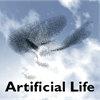COVID-19大流行期间的自我隔离和检测行为:一个基于主体的模型
IF 1.5
4区 计算机科学
Q4 COMPUTER SCIENCE, ARTIFICIAL INTELLIGENCE
引用次数: 1
摘要
自COVID-19大流行开始以来,人们提出了各种病毒传播模型。虽然这些模型大多侧重于复制病毒从受感染病原体向易感病原体传播的相互作用过程,但对病原体在适应大流行带来的风险时改变其行为的过程投入的努力较少。了解病原体对COVID-19传播的反应方式很重要,因为这种行为反应通过改变相互作用模式影响病毒传播的动态。在本文中,我们提出了一个基于代理的模型,其中包括一个决定代理测试和隔离倾向的行为模块,以了解各种行为参数在COVID-19传播中的作用。本文章由计算机程序翻译,如有差异,请以英文原文为准。
Self-Isolation and Testing Behaviour During the COVID-19 Pandemic: An Agent-Based Model
Since the beginning of the COVID-19 pandemic, various models of virus spread have been proposed. While most of these models focused on the replication of the interaction processes through which the virus is passed on from infected agents to susceptible ones, less effort has been devoted to the process through which agents modify their behaviour as they adapt to the risks posed by the pandemic. Understanding the way agents respond to COVID-19 spread is important, as this behavioural response affects the dynamics of virus spread by modifying interaction patterns. In this article, we present an agent-based model that includes a behavioural module determining agent testing and isolation propensity in order to understand the role of various behavioural parameters in the spread of COVID-19.
求助全文
通过发布文献求助,成功后即可免费获取论文全文。
去求助
来源期刊

Artificial Life
工程技术-计算机:理论方法
CiteScore
4.70
自引率
7.70%
发文量
38
审稿时长
>12 weeks
期刊介绍:
Artificial Life, launched in the fall of 1993, has become the unifying forum for the exchange of scientific information on the study of artificial systems that exhibit the behavioral characteristics of natural living systems, through the synthesis or simulation using computational (software), robotic (hardware), and/or physicochemical (wetware) means. Each issue features cutting-edge research on artificial life that advances the state-of-the-art of our knowledge about various aspects of living systems such as:
Artificial chemistry and the origins of life
Self-assembly, growth, and development
Self-replication and self-repair
Systems and synthetic biology
Perception, cognition, and behavior
Embodiment and enactivism
Collective behaviors of swarms
Evolutionary and ecological dynamics
Open-endedness and creativity
Social organization and cultural evolution
Societal and technological implications
Philosophy and aesthetics
Applications to biology, medicine, business, education, or entertainment.
 求助内容:
求助内容: 应助结果提醒方式:
应助结果提醒方式:


